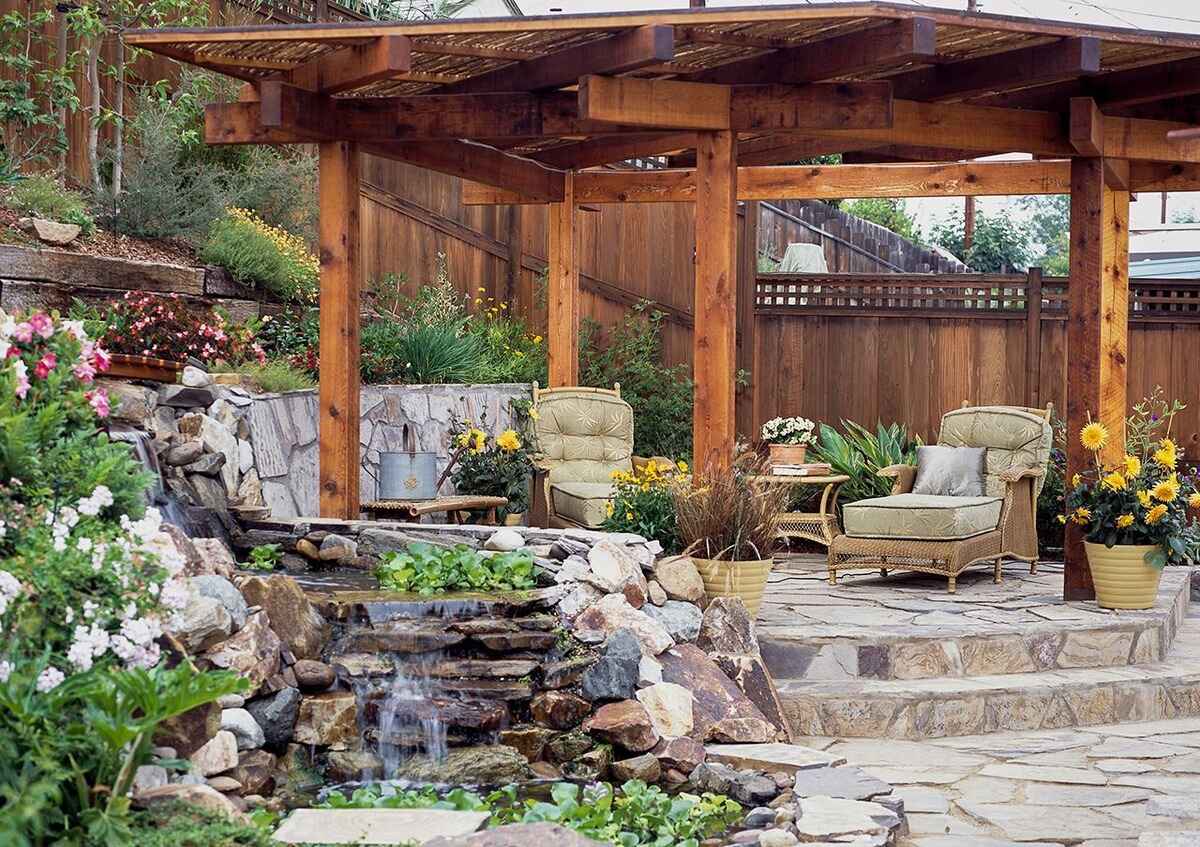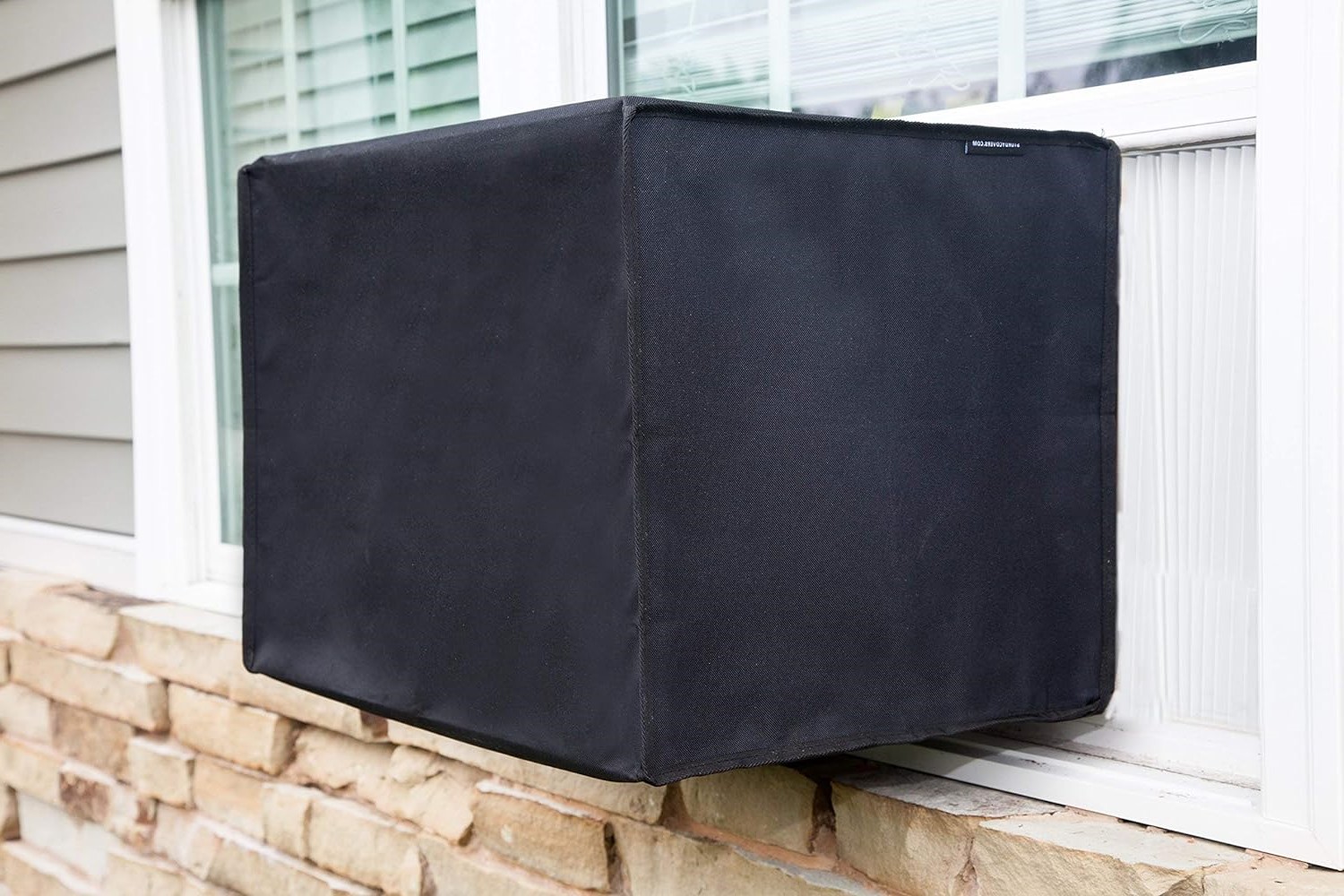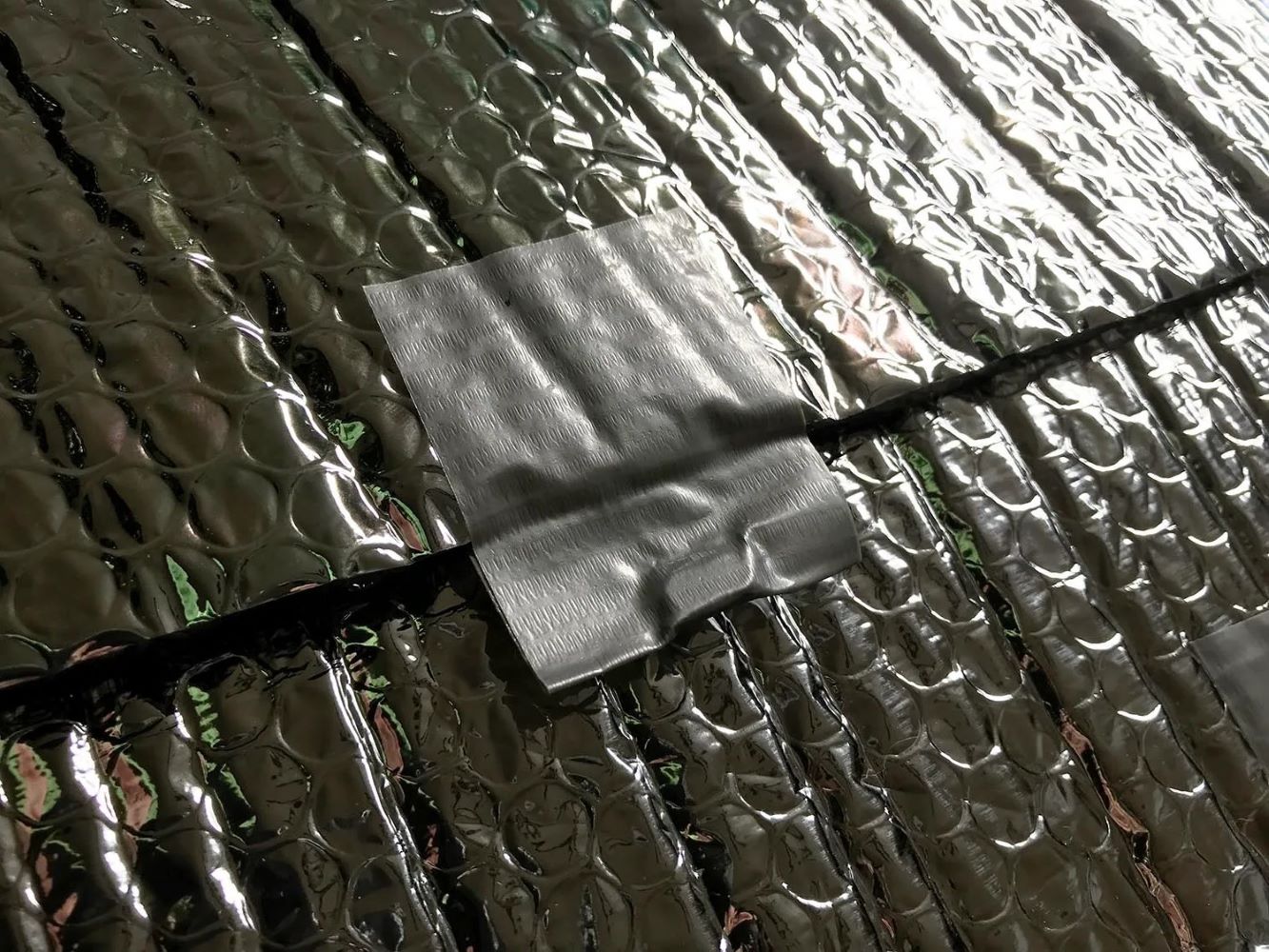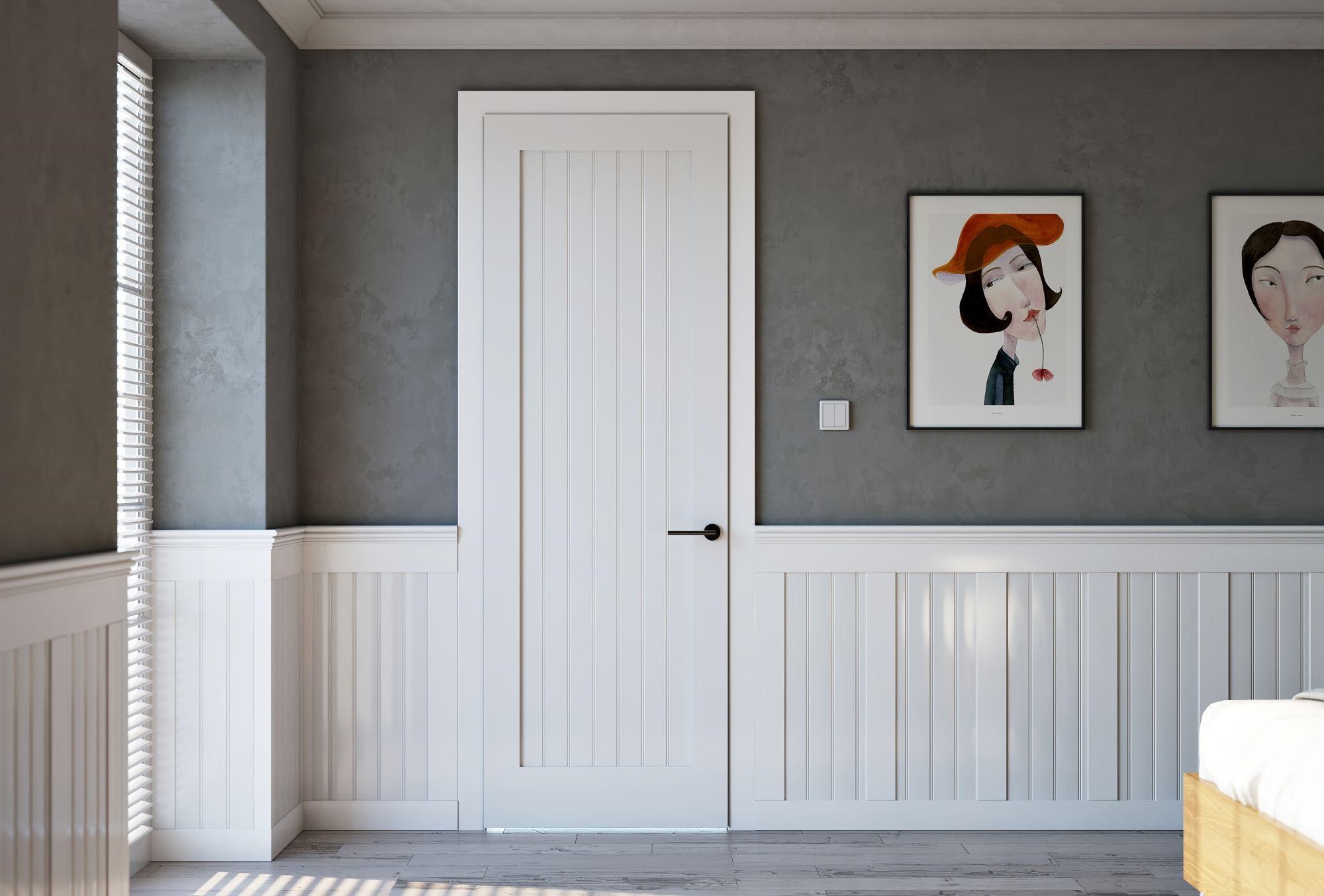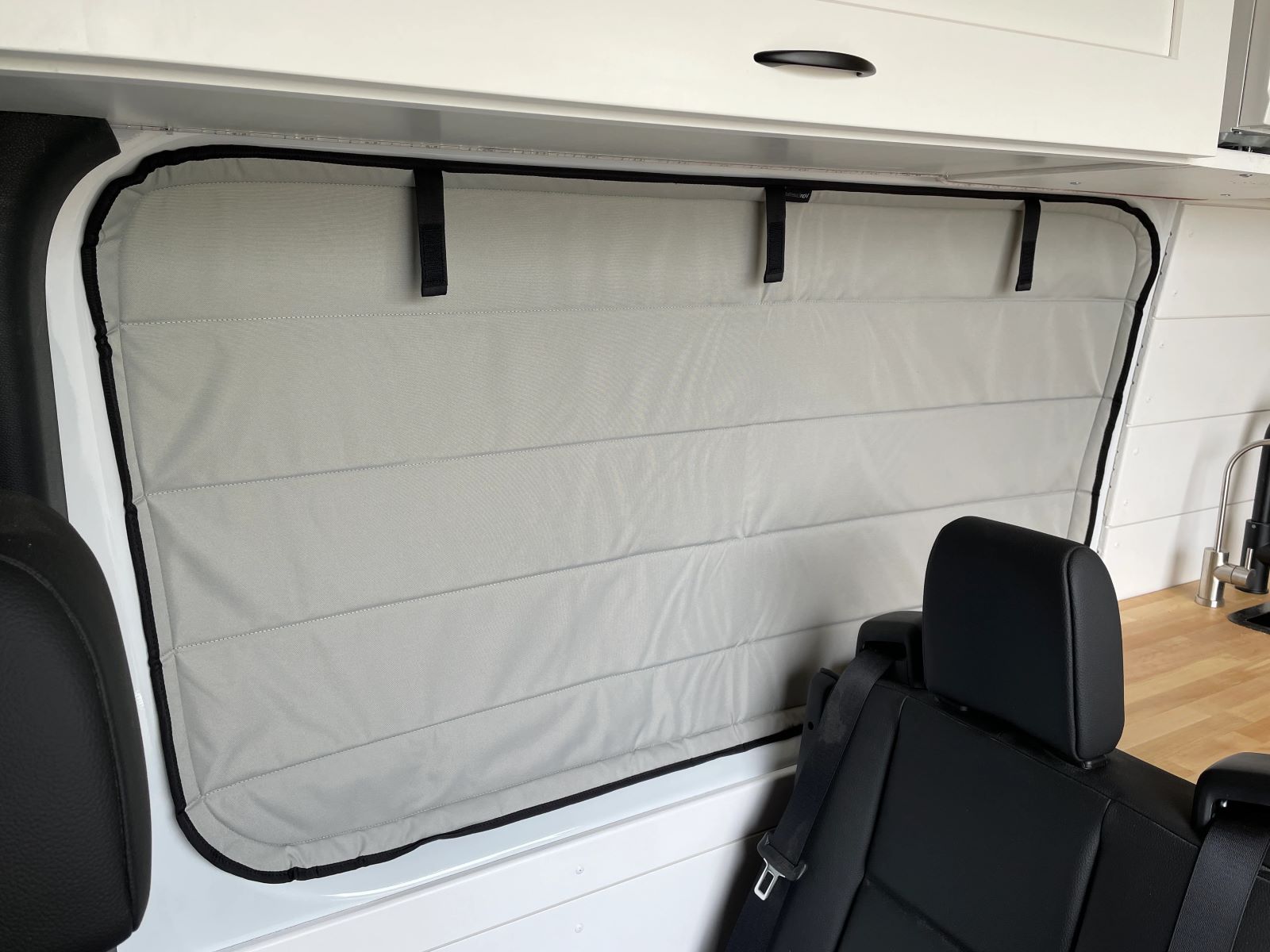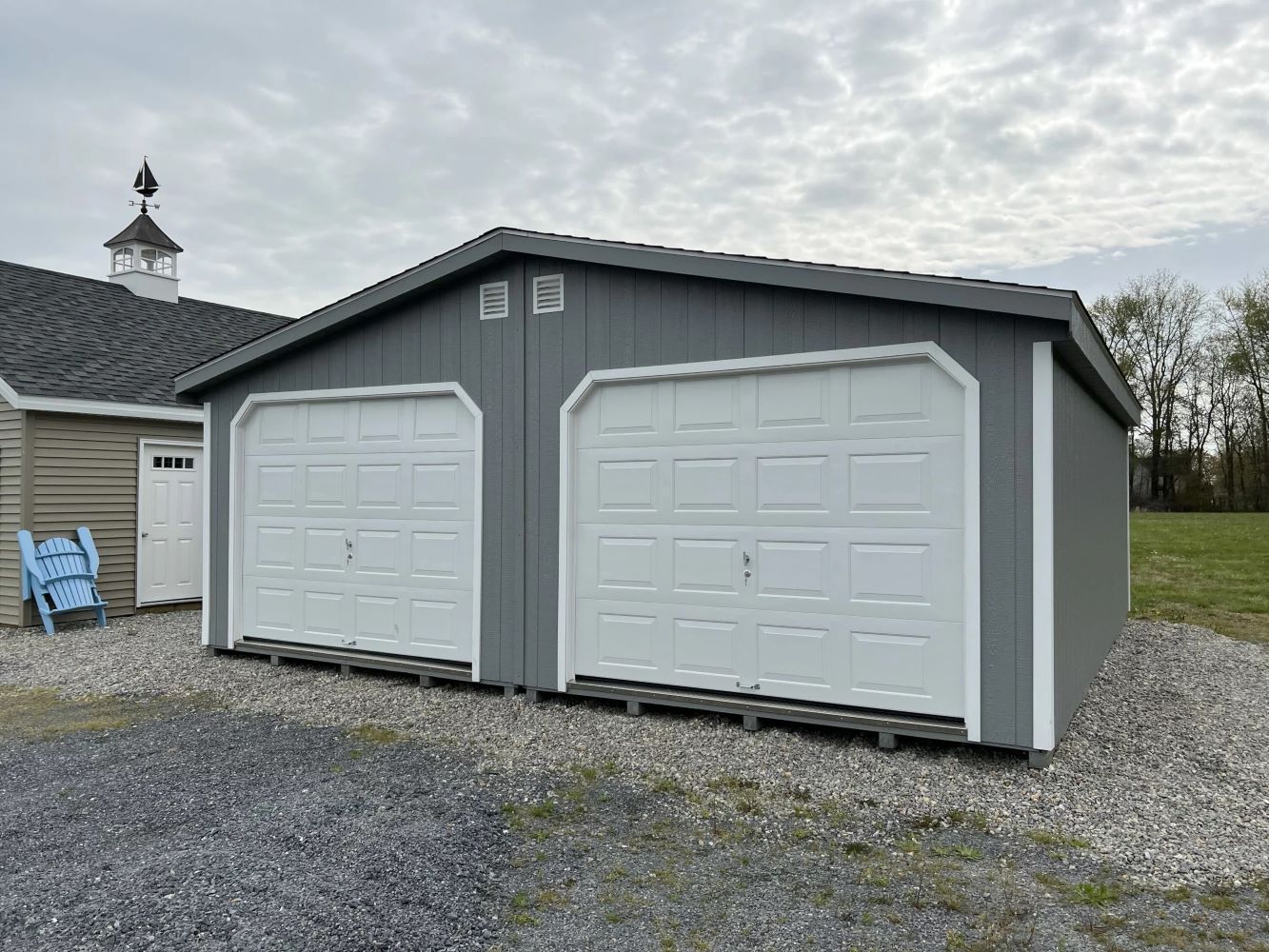Home>Outdoors & Camping>Hardscaping>How To Build A Covered Patio


Hardscaping
How To Build A Covered Patio
Published: February 20, 2024

Content Creator for Outdoors & Camping, Sophie turns any yard into a sustainable paradise. Her dedication to DIY outdoor projects and volunteer work in community gardens shares joy and knowledge.
Learn how to enhance your outdoor space with a beautiful covered patio. Discover expert tips and ideas for hardscaping your patio today!
(Many of the links in this article redirect to a specific reviewed product. Your purchase of these products through affiliate links helps to generate commission for Twigandthistle.com, at no extra cost. Learn more)
Introduction
Building a covered patio is a fantastic way to extend your living space and create a comfortable outdoor retreat right in your own backyard. Whether you envision a cozy spot for relaxing with a book, a space for entertaining guests, or a sheltered area for enjoying meals al fresco, a covered patio offers a versatile and inviting outdoor environment. From providing protection against the elements to enhancing the aesthetic appeal of your home, a well-designed and expertly constructed covered patio can significantly elevate your outdoor living experience.
In this comprehensive guide, we will walk you through the step-by-step process of building a covered patio, from initial planning and design to the finishing touches. You will gain valuable insights into the key considerations, essential tasks, and creative elements involved in creating a functional and visually appealing outdoor space. Whether you are a seasoned DIY enthusiast or enlisting the help of professionals, this guide will equip you with the knowledge and inspiration needed to embark on this exciting hardscaping project.
So, roll up your sleeves and get ready to delve into the world of covered patio construction. By the end of this journey, you will be well-prepared to transform your outdoor area into a captivating and practical oasis that seamlessly blends with your lifestyle and complements the architectural charm of your home. Let's embark on this fulfilling endeavor together and unlock the potential of your outdoor space with the art of building a covered patio.
Read more: How To install polycarbonate roofing
Step 1: Planning and Design
The initial phase of building a covered patio is the crucial planning and design stage. This step sets the foundation for the entire project, shaping the functionality, aesthetics, and overall success of the covered patio. Here's a detailed breakdown of the key aspects to consider during the planning and design phase:
-
Purpose and Functionality: Begin by defining the primary purpose of your covered patio. Are you aiming to create an outdoor dining area, a cozy lounge space, or a multifunctional entertainment zone? Understanding the intended functionality will guide the design process and help determine the size, layout, and features of the patio.
-
Location and Orientation: Evaluate the ideal location for your covered patio. Consider factors such as sunlight exposure, prevailing winds, privacy, and the relationship to your indoor living spaces. The orientation of the patio can impact natural light levels and the comfort of the outdoor area throughout the day.
-
Materials and Style: Explore various hardscaping materials and architectural styles to envision the look and feel of your covered patio. Whether you prefer the timeless appeal of natural stone, the versatility of pavers, or the warmth of wood, selecting the right materials is essential for achieving the desired aesthetic and ensuring durability.
-
Integration with Landscape: Integrate the design of the covered patio with your existing landscape. Consider how the patio will blend harmoniously with your garden, outdoor features, and the overall visual composition of your property. Incorporating greenery, decorative elements, and complementary hardscaping can enhance the appeal of the outdoor space.
-
Budget and Timeline: Establish a realistic budget for the project, factoring in materials, labor, and any additional features such as lighting or outdoor furnishings. Setting a clear timeline for the planning and construction phases will help manage expectations and ensure a smooth progression of the project.
-
Regulatory Considerations: Research local building codes, zoning regulations, and permit requirements related to constructing a covered patio. Understanding these regulations and obtaining necessary approvals are essential steps to avoid potential legal issues and ensure compliance with safety standards.
By meticulously addressing these considerations during the planning and design phase, you will lay a solid groundwork for the successful realization of your covered patio. This thoughtful approach will guide subsequent steps, leading to a well-executed and personalized outdoor space that aligns with your vision and lifestyle.
Step 2: Obtaining Permits and Approvals
Before commencing the construction of your covered patio, it is imperative to navigate the regulatory landscape by obtaining the necessary permits and approvals. This crucial step ensures compliance with local building codes and zoning regulations, laying the groundwork for a smooth and legally sound construction process.
The specific requirements for permits and approvals can vary based on your location and the scope of the project. Typically, constructing a covered patio involves considerations such as structural integrity, property boundaries, environmental impact, and adherence to safety standards. Engaging with the relevant municipal or county authorities is essential to gain clarity on the specific permits needed for your project.
The process of obtaining permits and approvals often involves submitting detailed plans and specifications for the proposed covered patio. These documents may need to demonstrate aspects such as the structural design, materials to be used, dimensions of the patio, and its relationship to existing structures on the property. Additionally, providing information on drainage plans, electrical work, and any alterations to the property's exterior may be required as part of the permit application.
While navigating the permit process, it is beneficial to engage with professionals such as architects, engineers, or hardscaping experts who can assist in preparing the necessary documentation and ensuring compliance with building regulations. Their expertise can streamline the permit application process and provide assurance that the proposed covered patio meets all relevant standards.
In some cases, obtaining approvals for a covered patio may also involve considerations related to environmental impact, especially if the project involves significant alterations to the landscape or the use of certain materials. Understanding and addressing these environmental factors, such as stormwater management and preservation of natural features, may be integral to securing the required permits.
By diligently addressing the permit and approval requirements, you can embark on the construction of your covered patio with confidence, knowing that the project aligns with legal and safety standards. This proactive approach not only ensures a smooth progression of the construction process but also mitigates the risk of potential complications or delays due to non-compliance with regulatory mandates.
In summary, obtaining permits and approvals for your covered patio project is a fundamental step that underscores your commitment to responsible and lawful construction practices. By navigating this phase with thoroughness and adherence to regulatory guidelines, you set the stage for a successful and compliant transformation of your outdoor space.
Step 3: Preparing the Site
Preparing the site for the construction of a covered patio is a pivotal phase that sets the groundwork for the structural integrity and long-term stability of the outdoor space. This step involves a series of meticulous tasks aimed at ensuring a level and well-drained foundation, establishing the framework for the patio structure, and addressing any site-specific considerations. Here's a detailed exploration of the essential aspects involved in preparing the site for your covered patio project.
Clearing and Excavation
The initial task in site preparation is to clear the designated area of any obstructions, debris, or vegetation that may impede the construction process. This includes removing rocks, roots, and any existing structures or features that are not integral to the new patio. Following the clearing process, excavation work is undertaken to create a level and adequately sized space for the patio. The depth of excavation will depend on factors such as the type of foundation to be used and the desired elevation of the patio in relation to the surrounding landscape.
Read more: How to Build a DIY Sliding Patio Door
Grading and Drainage
Achieving proper grading and drainage is critical to prevent water accumulation and ensure the long-term stability of the covered patio. The site is graded to facilitate water runoff away from the patio area, preventing potential issues such as pooling or erosion. Additionally, the installation of appropriate drainage solutions, such as French drains or surface channels, may be necessary to manage water flow and protect the patio from moisture-related damage.
Foundation and Footings
Establishing a robust foundation is essential for the structural integrity of the covered patio. Depending on the design and local building requirements, the foundation may involve concrete footings, piers, or other load-bearing elements. The dimensions and placement of the footings are carefully determined to support the weight of the patio structure and distribute it evenly to the underlying soil, ensuring stability and resistance to settling over time.
Utility Considerations
During site preparation, it is crucial to assess and address any utility considerations that may impact the construction process. This includes identifying the location of underground utilities such as electrical lines, water pipes, or gas lines. Taking necessary precautions to avoid interference with utilities and ensuring compliance with safety protocols are integral to the site preparation phase.
Site-Specific Factors
Site-specific factors, such as soil composition, topography, and proximity to existing structures, play a significant role in determining the approach to site preparation. Soil testing may be conducted to assess load-bearing capacity and compaction requirements, guiding decisions related to foundation design and soil stabilization measures. Additionally, considerations related to the proximity of trees, neighboring properties, and natural features are addressed to ensure harmonious integration of the covered patio with its surroundings.
By meticulously addressing these aspects during the site preparation phase, you establish a solid foundation for the subsequent stages of constructing your covered patio. This proactive approach sets the stage for a structurally sound and visually appealing outdoor space that seamlessly integrates with your landscape and enhances your outdoor living experience.
Read more: How To Build A Paver Patio
Step 4: Building the Structure
With the site meticulously prepared, the focus now shifts to the construction of the foundational structure for the covered patio. This phase involves translating the design plans into tangible form, bringing the envisioned outdoor retreat to life. From erecting support elements to integrating architectural features, the process of building the structure encompasses several key tasks that contribute to the overall strength, functionality, and aesthetic appeal of the patio.
Framing and Support Systems
The construction of the structure commences with the installation of the framing and support systems. This typically involves the assembly of load-bearing elements such as posts, beams, and headers, which form the framework for the patio. Careful attention is given to ensuring precise alignment, levelness, and secure anchoring of these components, as they provide the essential support for the roofing and covering elements.
Roofing Framework
The roofing framework, whether it involves traditional rafters, trusses, or a modern roofing system, is meticulously integrated into the structure. This phase demands precision in positioning and securing the roofing elements to create a stable framework that can withstand the elements and support the chosen roofing materials. The design considerations, such as slope, overhang, and ventilation, are carefully implemented to achieve optimal functionality and visual appeal.
Integration of Design Elements
As the structural framework takes shape, the integration of design elements such as decorative trims, architectural details, and embellishments becomes a focal point. These elements not only contribute to the aesthetic character of the covered patio but also serve practical purposes, such as providing shade, enhancing visual interest, and reinforcing the overall design coherence.
Read more: How to Build DIY Patio Doors
Considerations for Material Selection
The choice of materials for the structural components plays a pivotal role in determining the durability, maintenance requirements, and visual impact of the covered patio. Whether opting for natural wood, engineered composites, or metal elements, the selection is guided by factors such as climate resilience, architectural style congruence, and long-term performance.
Adherence to Building Standards
Throughout the construction of the structure, strict adherence to building standards, codes, and best practices is paramount. This ensures that the patio is constructed to withstand environmental forces, meet safety requirements, and align with industry-recognized construction guidelines. Engaging skilled professionals or hardscaping experts can provide assurance that the structural elements are executed in compliance with established standards.
As the structure of the covered patio takes form, the vision of an inviting and functional outdoor space begins to materialize. The meticulous attention to detail, precision in construction, and thoughtful integration of design elements lay the groundwork for the subsequent phases, bringing the project closer to its completion.
Step 5: Adding Roofing and Covering
The addition of roofing and covering marks a pivotal phase in the construction of a covered patio, as it not only provides protection from the elements but also contributes to the overall aesthetic appeal and functionality of the outdoor space. This stage involves the selection and installation of roofing materials, as well as the integration of covering elements that define the character and comfort of the patio.
Roofing Materials Selection
The choice of roofing materials is a critical decision that influences the durability, visual impact, and performance of the covered patio. Options range from traditional shingles and tiles to modern alternatives such as metal roofing, polycarbonate panels, or fabric canopies. Factors such as climate considerations, architectural style coherence, and maintenance requirements play a significant role in guiding the selection of roofing materials. Additionally, the ability of the chosen materials to provide effective insulation, UV protection, and weather resistance is carefully evaluated to ensure long-term functionality.
Read more: How to Build a Stylish DIY Range Hood Cover
Installation Process
The installation of roofing materials demands precision and attention to detail to create a weatherproof and structurally sound covering for the patio. Whether it involves laying shingles, securing metal panels, or assembling a canopy system, the installation process is executed with a focus on achieving proper alignment, secure fastening, and effective water shedding. Proper flashing, sealing, and edge detailing are integral to preventing water infiltration and ensuring the integrity of the roofing system. Additionally, considerations for ventilation, drainage, and thermal performance are addressed to optimize the functionality of the roofing installation.
Integration of Covering Elements
In addition to the primary roofing materials, the integration of covering elements such as retractable awnings, pergolas, or shade sails adds a layer of versatility and personalization to the covered patio. These covering elements not only provide additional shade and protection but also contribute to the visual dynamics and adaptability of the outdoor space. The selection of covering elements is driven by the desired level of flexibility, aesthetic preferences, and the specific functional requirements of the patio.
Aesthetic and Functional Considerations
The roofing and covering phase presents an opportunity to infuse the covered patio with aesthetic and functional enhancements. From incorporating decorative trims and architectural details to integrating lighting, fans, or heating elements, the addition of these features elevates the ambiance and usability of the outdoor space. Thoughtful consideration is given to creating a cohesive design language that harmonizes the roofing and covering elements with the overall style and purpose of the covered patio.
As the roofing and covering elements are seamlessly integrated into the structure, the covered patio begins to embody its envisioned character, offering a sheltered and inviting environment that extends the enjoyment of outdoor living. This phase represents a significant stride towards the completion of the covered patio, setting the stage for the final touches and the realization of a captivating outdoor retreat.
Step 6: Finishing Touches and Decorative Elements
The final phase of constructing a covered patio involves the meticulous addition of finishing touches and decorative elements, elevating the outdoor space to a realm of aesthetic charm and functional sophistication. This stage encompasses a range of details and enhancements that contribute to the visual appeal, comfort, and personalized character of the covered patio.
Lighting and Ambiance
The strategic integration of lighting elements plays a pivotal role in enhancing the ambiance and usability of the covered patio. From soft, ambient lighting for relaxed evenings to task lighting for functional areas, the selection and placement of lighting fixtures are carefully considered. Options such as string lights, lanterns, sconces, and recessed lighting are explored to create a captivating and inviting atmosphere that extends the enjoyment of the outdoor space into the evening hours.
Furnishings and Comfort
The addition of outdoor furnishings, such as seating arrangements, dining sets, and lounging amenities, transforms the covered patio into a functional and inviting retreat. The selection of weather-resistant and comfortable furnishings is guided by the intended use of the space, catering to relaxation, entertainment, or dining experiences. Thoughtful consideration is given to the arrangement of furnishings to optimize traffic flow, conversation areas, and visual balance within the patio environment.
Greenery and Landscaping
Integrating greenery and landscaping elements within and around the covered patio infuses the outdoor space with natural beauty and a sense of tranquility. Container gardens, potted plants, and vertical green walls are employed to introduce lush foliage, vibrant blooms, and textural diversity. The careful selection of plant species that thrive in the patio's microclimate ensures a harmonious integration of nature within the hardscaped environment, creating a refreshing and visually engaging setting.
Personalized Accents
Personalized accents and decorative elements, such as outdoor artwork, sculptures, or thematic decor, add a touch of individuality and character to the covered patio. These accents serve as focal points, conversation starters, and expressions of personal style, infusing the outdoor space with a sense of identity and charm. The selection and placement of these accents are guided by the desired thematic narrative, color palette, and the overall design ethos of the patio.
Read more: How to Build an Exterior Door Threshold
Functional Enhancements
In addition to aesthetic enhancements, the inclusion of functional elements such as outdoor heaters, ceiling fans, or audio systems enhances the comfort and usability of the covered patio. These features extend the seasonal utility of the outdoor space, providing climate control, entertainment options, and an overall heightened experience for occupants and guests.
By meticulously attending to these finishing touches and decorative elements, the covered patio evolves into a captivating and personalized outdoor sanctuary that reflects the unique preferences and lifestyle of its inhabitants. This phase marks the culmination of the construction journey, resulting in a harmonious fusion of form, function, and individual expression within the artfully crafted outdoor retreat.
Conclusion
In conclusion, the journey of building a covered patio is a testament to the transformative power of hardscaping, design ingenuity, and meticulous craftsmanship. From the initial stages of envisioning the outdoor retreat to the final embellishments that infuse it with character and comfort, the construction of a covered patio is a multifaceted endeavor that harmonizes architectural elements with natural surroundings.
Throughout this comprehensive guide, we have delved into the intricacies of each phase, from the meticulous planning and design considerations to the structural construction, roofing, and the integration of personalized touches. The covered patio, once a vision, now stands as a testament to the fusion of creativity, functionality, and personalized expression.
As the final touches are meticulously added, the covered patio emerges as a versatile and inviting space that extends the boundaries of indoor living into the embrace of nature. It becomes a stage for cherished moments, whether it's a leisurely afternoon with a book, a gathering of friends under the stars, or a tranquil retreat to savor the beauty of the outdoors.
The completion of a covered patio represents not just the physical manifestation of a construction project but the realization of an immersive outdoor experience. It embodies the art of blending architectural form with natural allure, creating a seamless transition between the comforts of home and the serenity of the outdoors.
As you embark on your own journey of building a covered patio, may this guide serve as a source of inspiration, guidance, and creative insight. Whether you choose to embark on the construction as a DIY enthusiast or enlist the expertise of hardscaping professionals, may the process be a fulfilling exploration of outdoor design and a celebration of the unique potential within your outdoor space.
With each phase carefully executed, from the foundational groundwork to the personalized embellishments, the covered patio becomes a canvas for self-expression, a sanctuary for relaxation, and a stage for memorable experiences. It stands as a testament to the artistry of outdoor living, inviting you to savor the beauty of nature while reveling in the comforts of a thoughtfully crafted outdoor retreat.
In the end, the construction of a covered patio transcends the realm of hardscaping; it becomes a narrative of personal style, a reflection of lifestyle, and an enduring testament to the art of outdoor living. So, as you embark on this transformative journey, may your covered patio become a cherished extension of your home, a haven of tranquility, and a canvas for the stories and moments that unfold under its sheltering embrace.

